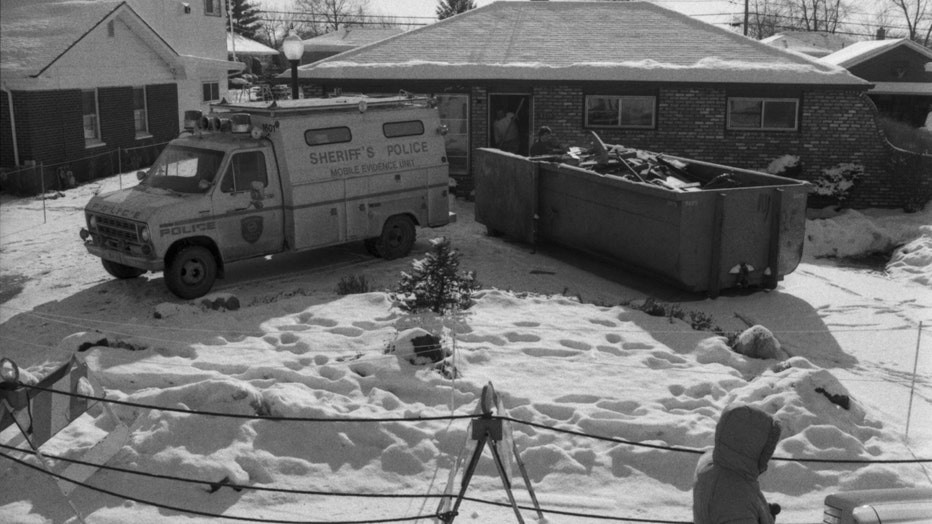John Wayne Gacy, a name synonymous with unspeakable horror, is known as one of America’s most notorious serial killers. Operating under the guise of “Pogo the Clown,” Gacy committed his heinous crimes in his suburban Chicago home located in Norwood Park. This house, situated at 8215 W Summerdale Ave, became the epicenter of his terror from 1971 until his arrest in December 1978, a period during which he murdered at least 33 young men.
Gacy’s predatory behavior predated his most infamous crimes. Even with a prior record of sexual assault, he was able to lure his victims, primarily teenage boys and young men, to his residence. Between 1972 and 1978, under false pretenses or through force, these young individuals were brought to the John Wayne Gacy House, where they were subjected to torture, sexual assault, and ultimately murder. The vast majority of his victims, 32 out of 33, were killed by strangulation or asphyxiation, their lives brutally cut short within the walls of this suburban home.
Most chillingly, Gacy buried the bodies of his victims in the crawl space beneath his house. Twenty-nine bodies were discovered in this confined space, turning the seemingly ordinary suburban home into a macabre burial ground. Two more victims were found buried elsewhere on the property. As the gruesome task of concealing bodies within the house became unsustainable, Gacy resorted to disposing of his final victims in the Des Plaines River, further extending the reach of his horrific acts beyond the confines of his property.
 Exterior view of the John Wayne Gacy house in Norwood Park, Chicago, where he committed his murders.
Exterior view of the John Wayne Gacy house in Norwood Park, Chicago, where he committed his murders.
The unraveling of Gacy’s horrific crimes began with the disappearance of 15-year-old Robert Piest. Piest, believed to be Gacy’s final victim, vanished after telling his mother about a meeting regarding a potential job opportunity. When Piest failed to return home, police investigations led them to Gacy. Initially, Gacy denied any contact with Piest but agreed to questioning. His suspicious behavior, including arriving at the police station in the early hours covered in mud claiming a car accident, raised red flags. Eventually, Gacy confessed to dumping Piest’s body in the Des Plaines River, marking the beginning of the exposure of his monstrous deeds.
The investigation intensified, focusing on Gacy’s Norwood Park residence. A thorough search of the John Wayne Gacy house and property commenced, leading to the grim discovery of 29 bodies buried in the crawl space and additional remains on the grounds. Following the removal of all victims and the collection of evidence, the house, a symbol of unimaginable horror, was demolished. For nearly a decade, the land at 8215 W Summerdale Ave remained an empty lot, a stark and unsettling reminder of the atrocities that had occurred there.
 Police investigation at the John Wayne Gacy house, uncovering human remains in the crawl space.
Police investigation at the John Wayne Gacy house, uncovering human remains in the crawl space.
In 1986, a new chapter began for the infamous land. A local woman purchased the vacant lot and constructed a new, modest home for her retired parents. This act of rebuilding was seen by some as a step towards reclaiming normalcy for the neighborhood, though the dark history of the location undoubtedly lingered in the collective memory. Despite apprehension from some, the new construction aimed to heal the space and provide a fresh start.
 The vacant lot where the John Wayne Gacy house once stood, a stark reminder of its dark history.
The vacant lot where the John Wayne Gacy house once stood, a stark reminder of its dark history.
Decades later, the house currently standing at 8215 W Summerdale Ave, built on the grounds of the former John Wayne Gacy house, was listed for sale with a price of $459,000. Interestingly, Illinois state law does not mandate the disclosure of the property’s history to potential buyers. While the real estate listing omits any mention of the land’s past, realtors are legally obligated to answer truthfully if prospective buyers directly inquire about the history of the John Wayne Gacy house location.
 The current house at 8215 W Summerdale Ave, Chicago, built on the site of the former John Wayne Gacy house, now for sale.
The current house at 8215 W Summerdale Ave, Chicago, built on the site of the former John Wayne Gacy house, now for sale.
John Wayne Gacy confessed to the murders, though he attempted to plead insanity. Ultimately, he was convicted of 33 murders and sentenced to death. He died by lethal injection on May 10, 1994, leaving behind a legacy of unimaginable cruelty forever associated with the address 8215 W Summerdale Ave – the John Wayne Gacy house.
